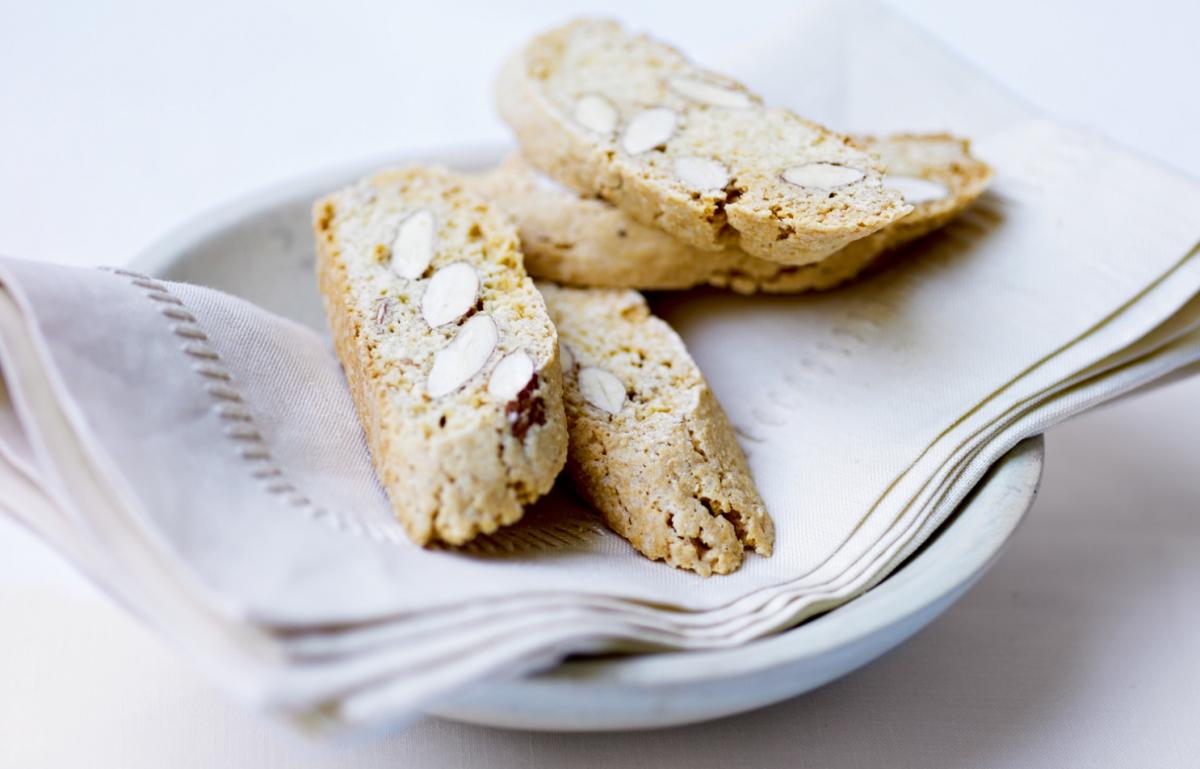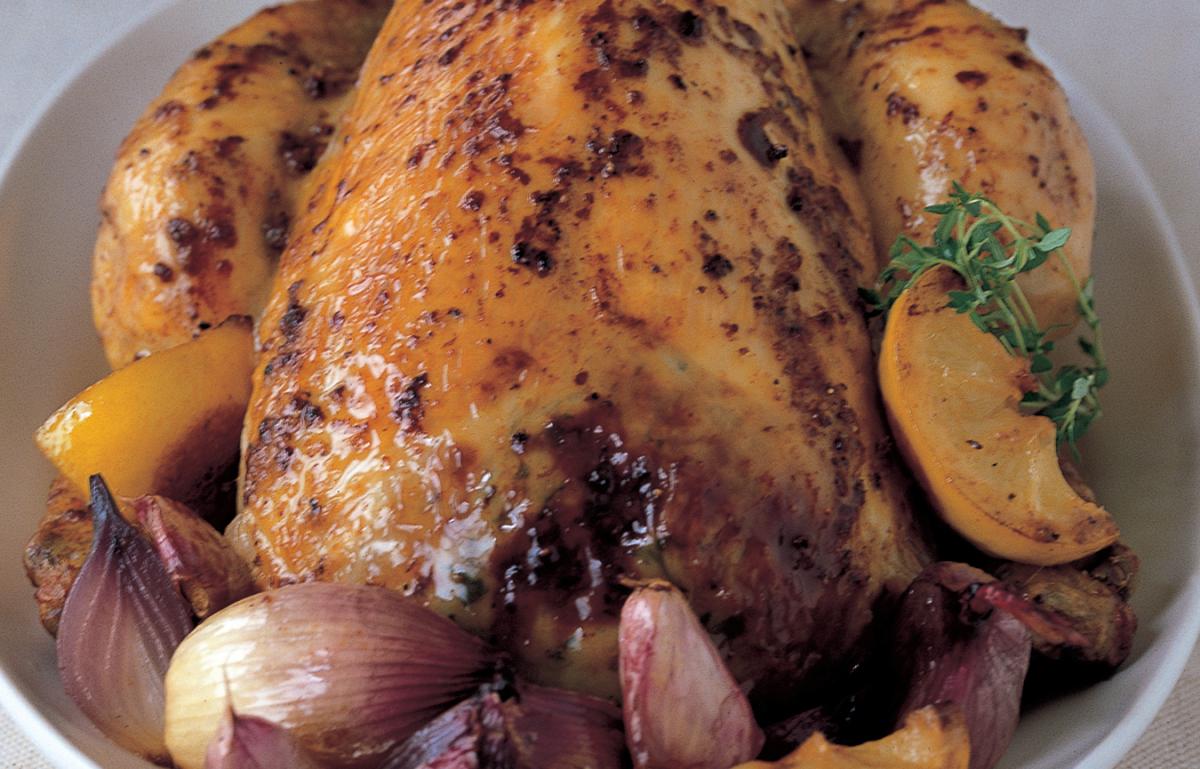

These are made in moments and are cooked in less than an hour, are light-textured but have all the flavours of Christmas. You don't have to make them at the last minute - they freeze beautifully and re-heat like a dream. Serve with Hot Buttery Rum Sauce or cream with a little rum.
90g self-raising flour
¾ teaspoon baking powder
1 teaspoon ground mixed spice
2 medium eggs
40g butter, softened
60ml black treacle
110ml Irish stout
1 ½ tablespoon dark rum
60g Bramley cooking apple, peeled, cored and finely diced
15g chopped roasted hazelnuts
110g currants
300g homemade or luxury mincemeat
grated zest 1 orange
grated zest 1 small lemon
18 fresh cranberries, to serve (optional)
1 ½ tablespoon brandy, if flaming the puddings
You will also need six 6-fl oz (175-ml) mini non-stick pudding basins, well buttered, a small, shallow roasting tin, some baking parchment and foil. (If you don’t have non-stick basins, you can use very well butterd metal or heatproof plastic basins)
Pre-heat the oven to 180°C, gas mark 4,
First sift the flour, baking powder and mixed spice into a medium bowl, then add the egg and softened butter. After that, measure the treacle into a glass measuring jug, add the stout and rum and mix these together. Next, pour this mixture into the bowl and, using an electric hand whisk, whisk everything very thoroughly together.
Now add the apple, nuts, currants, mincemeat and, finally, the grated orange and lemon zests. Then mix everything together very thoroughly, and divide the mixture among the 6 well-buttered pudding basins. Top each with a small circle of buttered baking parchment, followed by a 18-cm square of foil large enough to fold under the edges of the basins, making a pleat all the way round to seal. Now place the basins in the tin and place the tin in the oven. Next pour in 2.5 cm of boiling water from the kettle and leave to cook for 45-50 minutes, or until the puddings are springy and firm to the touch in the centre.
Then remove them from the oven and let them stand for 10 minutes before carefully running a small knife around each one to turn them out on to warm serving plates.
If you want to flame the puddings as they go on the table, warm a ladleful of brandy over direct heat and as soon as the brandy is hot, ask someone to set light to it using a long match. Place the ladle, now gently flaming, on top of the pudding – but don't pour the brandy over until you reach the table. When you do, pour it slowly over the pudding, sides and all, and watch it flame to the cheers of the assembled company!
You can make these puddings a couple of days ahead, remove them from the moulds and keep them covered on a buttered ovenproof dish, covered in the refrigerator. Then to reheat, sprinkle them with a couple of teaspoons of rum or brandy and cover the dish with buttered foil and heat in a oven pre-heated to gas mark 4, 350°F (180°C) for 20 minutes from room temperature or 30 minutes from cold. They can be frozen, defrosted overnight and reheated in the same way.
Garnish each pudding with 3 cranberries on top and serve with hot buttery rum sauce.
Serves 6
This is what we invariably serve with Christmas pudding in our house. The quantity of rum is a guideline only (I would have to confess that we add a bit more!). Brandy can be substituted for the rum if that's what you prefer.
40g butter
2 tablespoons dark rum
40g plain flour
300ml whole milk
40g golden caster sugar (or any sugar you have)
110ml double cream
Place the butter in a medium saucepan with the flour. Pour in the milk, then, using a balloon whisk, whisk everything vigorously together over a medium heat. As soon as it comes to simmering point and has thickened, turn the heat right down to its lowest setting, stir in the sugar and let the sauce cook, uncovered, for 10 minutes. Stir now and then to prevent it from sticking to the bottom. After that, add the rum and cream and transfer to a freezer container. Cover the surface of the sauce with clingfilm to stop a skin forming.
This can be made ahead and reheated gently in a saucepan whilst you heat the puddings.
This Christmas Cake was devised to make use of the excess vine fruits. And guess what? It’s gorgeous.
Makes about 20 slices
![[object Object]](https://www.deliaonline.com/sites/default/files/quick_media/baking-cake-ingredients.jpg)
4 tablespoons brandy
4 tablespoons port
½ teaspoon cinnamon
½ teaspoon freshly grated nutmeg
good pinch salt
300g (11oz) raisins
250g (9oz) currants
250g (9oz) sultanas
75g (3oz) chopped mixed peel
10g (½ oz) almonds, chopped (skin-on)
½ orange zest
½ lemon zest
175g (6oz) self-raising flour, sifted
175g (6oz) soft-dark brown sugar
175g (6oz) butter, softened
4 medium eggs
You will need a 20 cm round cake tin, greased and lined with a double thickness of baking parchment. Tie a band of brown paper round the outside of the tin for extra protection.
The day before you intend to bake the cake, measure out the brandy and port, into a large saucepan. Then add the cinnamon, nutmeg, salt, dried fruits, mixed peel, nuts and zest’s. Now stir and bring the mixture up to simmering point, then, keeping the heat low, simmer very gently for 10 minutes. After that allow everything to cool then pour the mixture into an airtight plastic container and leave it in a cool place overnight. Remember to take the butter out of the fridge so it will soften.
When you are ready to bake the cake, pre-heat the oven to 140°C, (conventional oven) gas mark 1. All you do is measure out the flour, sugar and softened butter into a very large mixing bowl then add the eggs and with an electric whisk, beat until everything is evenly blended. (Use a wooden spoon if you don’t have an electric whisk).
Now use a large metal spoon to gradually fold in the fruit mixture until it’s all evenly distributed. Then spoon the mixture into the prepared tin, levelling the surface with the back of the spoon.
Finally cover the top of the cake with a double square of parchment paper with a 50p-size hole in the centre (this gives extra protection during the long slow cooking).
Bake the cake in the centre of the oven for 4 hours until it feels springy in the centre when lightly touched.
Cool the cake for 45 minutes in the tin, then remove it to a wire rack to finish cooling. When it’s completely cold, wrap in double greaseproof paper and then foil and store in an airtight tin or polythene box.
This cake eats very well as it is but if your want to use some of the brandy from your storecupboard, you can ‘feed’ it by making small holes in the top and bottom with a cocktail stick and spoon in a couple of tablespoons of brandy then it wrap it in double baking parchment and foil or store in an airtight tin.
You can now ‘feed’ it at weekly intervals until you eat it as it is or ice it.
Home-made mincemeat is dead simple to make though in the past people used to have trouble storing it. This was because the high percentage of apples oozed too much juice and the juice started to ferment. In the following recipe the mincemeat is placed in a barely warm oven and so the suet gradually melts and as this happens it coats all the fruits, including![[object Object]](https://www.deliaonline.com/sites/default/files/quick_media/happy-homemade-christmas-mincemeat.jpg) the apples, sealing in the juices. Vegetarians can make this mincemeat happily, using vegetarian suet.
the apples, sealing in the juices. Vegetarians can make this mincemeat happily, using vegetarian suet.
Makes approx 750g
150g Bramley apples, cored and chopped small (no need to peel)
75g shredded suet
125g raisins
90g sultanas
90g currants
90g whole mixed candied peel, finely chopped
75g soft dark brown sugar
grated zest and juice 1 medium orange
grated zest and juice 1 small lemon
25g whole almonds, cut into slivers
1 slightly rounded teaspoon mixed ground spice
good pinch ground cinnamon
good pinch freshly grated nutmeg
2 tablespoons brandy
You will also need 2 x 1lb (350ml) preserving jars and 2 waxed discs.
All you do is combine all the ingredients, except for the brandy, in a large heatproof mixing bowl, stirring them and mixing them together very thoroughly indeed. Then cover the bowl with a clean cloth and leave the mixture in a cool place overnight or for 12 hours, so the flavours have a chance to mingle and develop. After that pre-heat the oven to 120°C, (Cconventional oven) gas mark ¼. Cover the bowl loosely with foil and place it in the oven for 3 hours. Then remove the bowl from the oven. Don't worry about the appearance of the mincemeat, which will look positively swimming in fat. This is how it should look. As it cools, stir it from time to time; the fat will coagulate and, instead of it being in tiny shreds, it will encase all the other ingredients. When the mincemeat is quite cold, stir in the brandy. Pack in sterilised jars (see below), cover with waxed discs and seal. It will keep in a cool, dark cupboard indefinitely, but I think it is best eaten within a year of making.
NOTE: To sterilise preserving jars, wash them in warm soapy water, rinse and dry, then pop them in a medium oven for 5 minutes.
I will always cherish fond memories of my mother's and my grandmother's cooling trays piled high with freshly baked mince pies on Christmas Eve, ready to be packed into tins and brought out whenever friends popped in for Christmas drinks. The following is the traditional family recipe.
Makes 18
450g (1lb) home-made Christmas mincemeat
250g (9oz) plain flour
60g (2 ½oz) lard
60g (2 ½oz) butter
Pinch of salt
For the top:
A little milk
Icing sugar
You will also need one (or two) trays of 6cm (2½ inch) patty tins, one fluted 7.5cm (3 inch) pastry cutter and one 6cm (2½ inch) cutter.
Pre-heat the oven to 200°C, gas mark 6.
Make up the pastry by sifting the flour and salt into a mixing bowl and rubbing the fats into it until the mixture resembles fine crumbs. Then add just enough cold water to mix to a dough that leaves the bowl clean. Leave the pastry to rest in a polythene bag in the refrigerator for 20-30 minutes, then roll half of it out as thinly as possible and cut it into eighteen 7.5cm (3 inch) rounds, gathering up the scraps and re-rolling. Then do the same with the other half of the pastry, this time using the 2½ inch (6 cm) cutter.
Now grease the patty tins lightly and line them with the larger rounds. Fill these with mincemeat to the level of the edges of the pastry. Dampen the edges of the smaller rounds of pastry with water and press them lightly into position to form lids, sealing the edges. Brush each one with milk and make three snips in the tops with a pair of scissors. Bake near the top of the oven for 25-30 minutes until light golden brown. Cool on a wire tray and sprinkle with icing sugar. When cool, store in an airtight container.
These can be made ahead and frozen (without the icing sugar). Then defrosted for 45 minutes at room temperature.
Follow us Like us on Facebook Follow us on twitter Follow us on instagram Follow us on pinterest Follow us on youtube
© 2001-2024 All Rights Reserved Delia Online